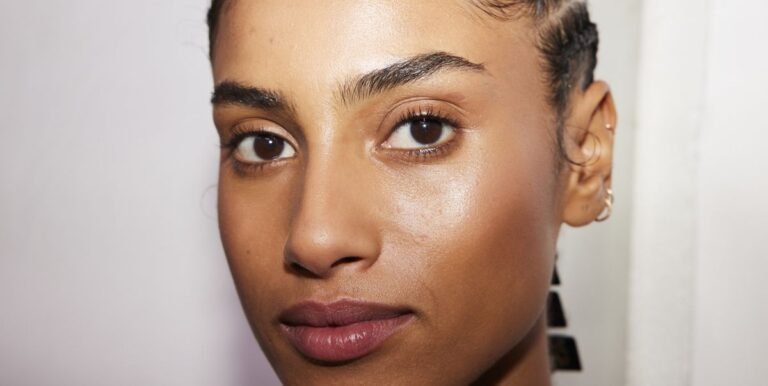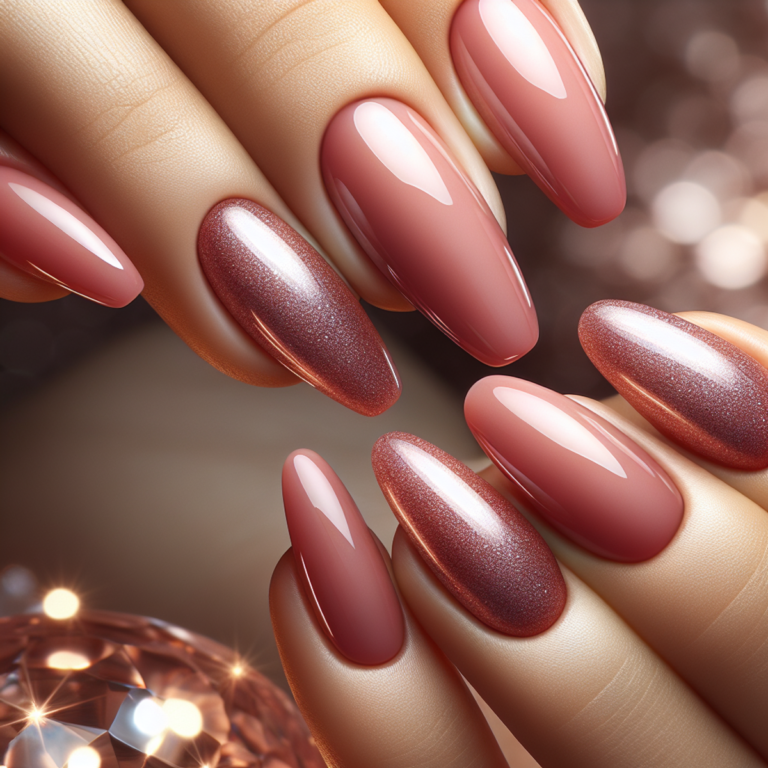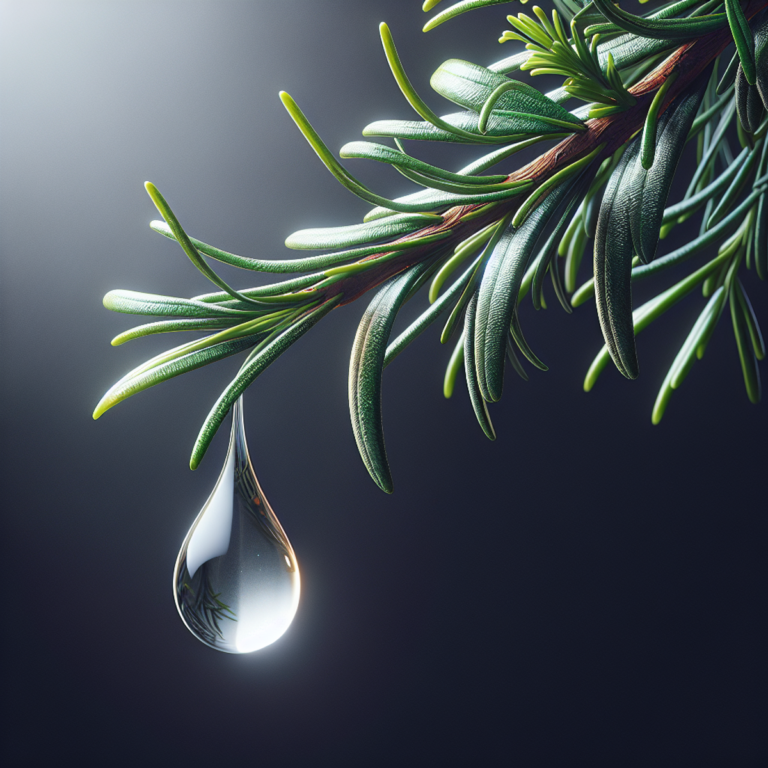How to get rid of pimple marks

Introduction
Pimple marks can turn a clear complexion into a constant source of frustration. These dark spots, medically known as post-inflammatory hyperpigmentation (PIH), appear after acne lesions heal, leaving behind visible reminders of past breakouts.
Your skin’s appearance plays a significant role in self-confidence and social interactions. Pimple marks can:
- Create uneven skin tone
- Make makeup application challenging
- Affect self-esteem
- Lead to social anxiety
- Cause unnecessary stress about skin appearance
Addressing these marks isn’t just about aesthetics – it’s essential for maintaining healthy skin. Proper treatment of pimple marks can:
- Prevent long-term discoloration
- Improve skin texture
- Boost collagen production
- Enhance natural skin healing
- Reduce the risk of permanent scarring
Whether you’re dealing with fresh marks or stubborn spots that have lingered for months, effective solutions exist. From natural remedies to professional treatments, this guide will walk you through proven methods to fade pimple marks and restore your skin’s natural radiance. You’ll discover practical steps to incorporate into your skincare routine, helping you achieve the clear, even-toned complexion you desire.
Understanding Pimple Marks
Pimple marks appear as dark spots or discoloration on your skin after acne heals. These marks, known as post-inflammatory hyperpigmentation (PIH), differ significantly from acne scars. While PIH presents as flat, darkened patches, scars involve textural changes in the skin’s surface, creating indentations or raised areas.
The Science Behind PIH Formation:
- Your skin produces excess melanin during the healing process
- Inflammation triggers melanocytes to increase pigment production
- The deeper the inflammation, the darker the resulting mark
The severity of pimple marks varies based on several key factors:
- Skin Type and ToneDarker skin tones are more prone to PIH
- Sensitive skin may develop more intense marks
- Oily skin types often experience longer healing times
- Sun ExposureUV rays darken existing marks
- Unprotected sun exposure extends healing time
- Melanin production increases with sun damage
- Picking BehaviorSqueezing pimples increases inflammation
- Touching affected areas introduces bacteria
- Picking delays the natural healing process
Duration and Healing Process:
- Mild marks typically fade within 3-6 months
- Deeper marks may take up to 24 months to resolve
- Natural skin cell turnover aids in mark reduction
Your skin’s healing capacity depends on:
- Age and hormonal balance
- Overall skin health
- Existing skincare routine
- Genetic predisposition
- Environmental factors
Understanding these factors helps you develop targeted treatment strategies for your specific skin concerns. Different types of marks require different approaches – from gentle exfoliation for surface-level discoloration to more intensive treatments for stubborn marks.
Home Remedies for Pimple Marks
Natural remedies offer a gentle, accessible approach to treating pimple marks right from your home. These solutions use common ingredients to help fade dark spots and improve skin texture.
1. Vitamin C
Vitamin C is a powerful ingredient in the fight against pimple marks. This antioxidant works by:
- Inhibiting tyrosinase, an enzyme responsible for melanin production
- Protecting skin cells from UV damage
- Boosting collagen production for improved skin texture
- Reducing inflammation and redness
Using Vitamin C Serums:
- Apply 2-3 drops on clean, dry skin
- Start with a lower concentration (5-10%)
- Use in the morning before sunscreen
- Store in a dark, cool place to maintain potency
Natural Sources of Vitamin C:
- Fresh lemon juice mixed with honey as a spot treatment
- Orange peel powder combined with yogurt for a brightening mask
- Kiwi fruit pulp applied directly to dark spots
- Strawberry face masks
DIY Vitamin C Face Mask Recipe:
- Mix 1 tablespoon of orange juice
- Add 1 teaspoon of honey
- Combine with 1 teaspoon of plain yogurt
- Apply to affected areas for 15 minutes
- Rinse with lukewarm water
Tips for Maximum Benefits:
- Patch test new treatments on a small area first
- Apply vitamin C products consistently for best results
- Wait 5 minutes between applying vitamin C and other skincare products
- Combine with sunscreen during daytime use
- Use fresh ingredients for DIY treatments
Precautions:
- Avoid applying citrus juices directly on skin
- Don’t use vitamin C with retinol at the same time
- Stop use if irritation occurs
- Keep vitamin C products away from direct sunlight
- Replace products that have oxidized (turned brown)
2. Aloe Vera
Aloe vera is a powerful natural remedy for pimple marks, packed with compounds that accelerate skin healing and promote an even complexion. This succulent plant contains aloesin and acemannan, two active ingredients that reduce melanin production and stimulate collagen synthesis.
The gel’s natural properties offer multiple skin benefits:
- Anti-inflammatory compounds reduce redness
- Antioxidants protect against free radical damage
- Moisturizing elements prevent skin dryness
- Natural enzymes promote gentle exfoliation
You can apply aloe vera to your skin through several effective methods:
Direct Application
- Cut a fresh aloe leaf
- Extract the clear gel
- Apply directly to pimple marks
- Leave on for 30 minutes
- Rinse with cool water
Overnight Mask
- Mix pure aloe gel with 2-3 drops of tea tree oil
- Apply a thin layer to affected areas
- Leave overnight
- Wash face in the morning
Spot Treatment
- Combine aloe vera gel with honey
- Dab mixture on specific marks
- Apply twice daily
- Keep on for 15-20 minutes
For optimal results, use fresh aloe vera gel from the plant. If using store-bought versions, select products with at least 95% pure aloe vera and avoid those containing artificial fragrances or colors.
Remember to perform a patch test before applying aloe vera to your face, as some people may experience sensitivity to the plant’s natural compounds.
3. Grapeseed Extract
Grapeseed extract is a powerful natural solution for treating pimple marks. It contains high levels of proanthocyanidins and antioxidants, which directly target hyperpigmentation by reducing melanin production and protecting skin cells from damage caused by free radicals.
Benefits for Your Skin:
- Reduces dark spots and uneven skin tone
- Boosts collagen production for improved texture
- Provides anti-inflammatory properties
- Helps minimize future breakouts
- Accelerates skin cell regeneration
How to Use Grapeseed Extract:
- Direct ApplicationMix 2-3 drops with your regular moisturizer
- Apply directly to affected areas twice daily
- Best used after cleansing and toning
- DIY Spot TreatmentCombine 5 drops with 1 tablespoon jojoba oil
- Apply to dark spots using a cotton swab
- Leave overnight for maximum absorption
Safety Guidelines:
- Perform a patch test before full application
- Start with once-daily use
- Dilute with carrier oils like:
- Jojoba oil
- Sweet almond oil
- Rosehip oil
For optimal results, use grapeseed extract consistently for 8-12 weeks. The concentration should stay between 0.5-2% when mixed with carrier oils. This natural remedy works best when combined with proper sun protection and a gentle skincare routine.
Remember to store your grapeseed extract in a cool, dark place to maintain its potency. Pure, cold-pressed versions offer the highest concentration of beneficial compounds for treating pimple marks.
4. Sun Protection
UV rays can significantly worsen pimple marks, making them darker and more noticeable. Your skin becomes extra sensitive to sunlight during the healing process, increasing the risk of post-inflammatory hyperpigmentation.
Essential Sun Protection Guidelines:
- Apply broad-spectrum SPF 30 or higher daily
- Reapply sunscreen every 2-3 hours when outdoors
- Use physical barriers like hats and umbrellas
- Avoid peak sun hours (10 am – 4 pm)
Recommended Sunscreen Types for Acne-Prone Skin:
- Mineral-based sunscreens with zinc oxide or titanium dioxide
- Non-comedogenic formulas that won’t clog pores
- Oil-free options suitable for sensitive skin
- Tinted sunscreens that help camouflage marks
Top Sunscreen Picks:
- La Roche-Posay Anthelios Clear Skin SPF 60
- EltaMD UV Clear Facial Sunscreen SPF 46
- Neutrogena Clear Face Liquid Lotion Sunscreen SPF 55
- CeraVe Hydrating Sunscreen SPF 50
The right sunscreen should feel lightweight and absorb quickly into your skin. Look for products labeled “non-greasy” or “matte finish” to prevent excess shine. Water-resistant formulas provide additional protection during outdoor activities or sweating.
Remember to patch test new sunscreens on a small area of your skin before applying them to your entire face. This helps prevent potential reactions that could worsen existing pimple marks.
Over-the-Counter Treatments for Pimple Marks
Over-the-counter treatments offer a powerful solution for treating pimple marks without requiring a prescription. These accessible options combine scientifically-proven ingredients to target hyperpigmentation and promote skin healing.
1. Retinoids
Retinoids stand out as a powerhouse ingredient in the battle against pimple marks. These vitamin A derivatives work at a cellular level to accelerate skin renewal and boost collagen production.
How Retinoids Work:
- Speed up cell turnover to reveal fresh, unmarked skin
- Stimulate collagen synthesis for improved skin texture
- Regulate melanin production to fade dark spots
- Unclog pores to prevent future breakouts
Popular Retinoid Products:
- Adapalene 0.1% gel – Available as Differin, this FDA-approved retinoid targets both acne and post-inflammatory hyperpigmentation
- The Ordinary Retinol 0.5% in Squalane – A gentle formulation ideal for retinoid beginners
- La Roche-Posay Effaclar Adapalene Gel – Contains 0.1% adapalene in a non-comedogenic base
Usage Guidelines:
- Start with a lower concentration (0.25-0.5%) to minimize irritation
- Apply a pea-sized amount to clean, dry skin in the evening
- Use 2-3 times per week initially, gradually increasing frequency
- Always pair with sunscreen during daytime use
- Expect visible results within 8-12 weeks of consistent use
Application Tips:
- Buffer retinoids with moisturizer if experiencing sensitivity
- Avoid using other active ingredients (AHAs, BHAs) on the same night
- Skip retinoids if experiencing excessive dryness or irritation
- Store products in a cool, dark place to maintain stability
Precautions:
- Not recommended during pregnancy or breastfeeding
- May cause initial purging in the first few weeks
- Can increase sun sensitivity
- Should be discontinued if persistent irritation occurs
2. Alpha Hydroxy Acids (AHAs)
Alpha Hydroxy Acids (AHAs) are powerful exfoliating agents that work by dissolving the bonds between dead skin cells. These water-soluble acids effectively target the skin’s surface layer, revealing brighter, more even-toned skin beneath.
Key Benefits of AHAs:
- Removes dead skin cells
- Brightens dark spots and hyperpigmentation
- Improves skin texture
- Unclogs pores
- Stimulates collagen production
Popular AHA ingredients include glycolic acid, lactic acid, and mandelic acid. Glycolic acid, with its smaller molecular size, penetrates deeply into the skin, making it particularly effective for treating pimple marks. Lactic acid offers gentler exfoliation, ideal for sensitive skin types.
How to Use AHAs Safely:
- Start with a lower concentration (5-7%)
- Apply AHA products 2-3 times per week initially
- Use in the evening after cleansing
- Always follow with sunscreen during daytime
- Wait 30 minutes before applying other skincare products
You can find AHAs in various forms:
- Toners
- Serums
- Creams
- Face masks
- Cleansers
Caution: Skin might experience temporary redness or mild tingling during initial use. If irritation persists, reduce frequency or switch to a lower concentration. Avoid using AHAs alongside retinoids or vitamin C in the same routine to prevent skin sensitivity.
3. Kojic Acid and Azelaic Acid
Kojic acid and azelaic acid are two powerful ingredients that can help reduce pimple marks. They work by addressing the main cause of post-inflammatory hyperpigmentation, which is excess melanin production.
Benefits of Kojic Acid:
- Blocks tyrosinase, an enzyme responsible for melanin production
- Creates a visible brightening effect on dark spots
- Works effectively on all skin types
- Shows results within 4-8 weeks of consistent use
Advantages of Azelaic Acid:
- Reduces inflammation and redness
- Fights acne-causing bacteria
- Promotes cell turnover
- Prevents future breakouts
You’ll find these ingredients in various skincare products:
- Serums: Lightweight options with 1-2% concentration
- Creams: Thicker formulas with 2-4% concentration
- Spot treatments: Targeted solutions with up to 4% concentration
Application Tips:
- Start with a patch test on a small area
- Apply a pea-sized amount to affected areas
- Use in the evening after cleansing
- Follow with moisturizer
- Always wear sunscreen during daytime use
Product Selection Guide:
- Look for pH-balanced formulations
- Choose products with additional soothing ingredients
- Verify the concentration percentage
- Check for proper packaging that protects ingredient stability
These acids work best when used consistently as part of your skincare routine. Results typically appear within 8-12 weeks, with continued improvement over time.
Professional Treatments for Pimple Marks
Professional dermatological treatments offer advanced solutions for stubborn pimple marks that resist over-the-counter remedies. These clinical procedures deliver targeted results through specialized equipment and medical-grade products.
1. Chemical Peels
Chemical peels are a powerful treatment option for addressing pimple marks through controlled exfoliation. These treatments work by applying specific chemical solutions to remove damaged skin layers.
Types of Chemical Peels:
- Superficial Peels: Use mild acids like glycolic or lactic acid, target the epidermis (top layer), have minimal downtime (2-3 days), are best for light discoloration, and require 4-6 sessions for optimal results.
- Medium-Depth Peels: Contain TCA (trichloroacetic acid), penetrate to the dermis, have a recovery period of 5-7 days, address deeper pigmentation, and show results in 2-3 sessions.
Treatment Process:
- Skin preparation and cleansing
- Application of the chemical solution
- Neutralization (if required)
- Post-peel care instructions
Expected Results:
- Improved skin texture
- Reduced pigmentation
- Enhanced skin clarity
- Smoother complexion
- Minimized appearance of pores
Important Considerations:
- Results vary based on:
- Skin type
- Mark severity
- Chosen peel strength
- Treatment frequency
- Post-treatment care includes:
- Strict sun protection
- Gentle skincare routine
- Adequate moisturization
- Avoiding harsh products
Treatment Schedule:
- Light peels: Every 2-4 weeks
- Medium peels: Every 4-6 months
- Maintenance sessions: As recommended by your dermatologist
Professional chemical peels deliver significant improvements in pimple mark appearance through controlled exfoliation and skin renewal. These treatments stimulate collagen production, enhance cell turnover, and promote the development of fresh, unmarked skin.
2. Microdermabrasion
Microdermabrasion is a non-invasive dermatological procedure that effectively targets pimple marks through mechanical exfoliation. This professional treatment uses either fine crystals or a diamond-tipped wand to gently remove the top layer of dead skin cells.
The Procedure
- A trained professional uses a specialized device to spray tiny crystals onto your skin
- The device simultaneously vacuums away dead skin cells and used crystals
- Treatment sessions typically last 30-60 minutes
- No downtime required – you can return to daily activities immediately
Key Benefits
- Stimulates collagen production
- Improves skin texture
- Reduces the appearance of shallow pimple marks
- Enhances product absorption by up to 50%
- Creates a brighter, more radiant complexion
What to Expect
- Mild redness for 24-48 hours post-treatment
- Results become visible after 3-5 sessions
- Monthly treatments recommended for optimal results
- Gentle enough for sensitive skin types
The treatment works best for superficial pimple marks and mild discoloration. Your skin becomes more receptive to topical treatments after microdermabrasion, making it an excellent complement to other skincare products and treatments.
Treatment Tips
- Avoid sun exposure for 1-2 days after treatment
- Apply moisturizer regularly to support skin healing
- Skip harsh skincare products for 48 hours post-procedure
- Stay hydrated to enhance results
Your dermatologist might recommend combining microdermabrasion with other treatments like chemical peels or topical medications for enhanced results. The number of sessions needed varies based on your skin condition and desired outcomes.
3. Laser Resurfacing
Laser resurfacing is a powerful dermatological solution for stubborn pimple marks. This advanced treatment goes deep into your skin layers, triggering natural healing processes and collagen production.
How Laser Treatment Works:
- Concentrated light beams target specific skin layers
- Heat energy breaks down damaged skin cells
- Stimulates fresh collagen production
- Creates controlled micro-injuries for skin regeneration
The procedure offers precise targeting capabilities, allowing dermatologists to treat specific areas without affecting surrounding healthy tissue. You’ll typically notice improvements in both skin texture and tone after 3-5 sessions.
Types of Laser Treatments:
- Fractional lasers: Create microscopic treatment zones
- CO2 lasers: Best for deeper pimple marks
- Pulsed-dye lasers: Target red marks and inflammation
- Nd:YAG lasers: Suitable for darker skin tones
Expected Side Effects:
- Redness lasting 3-7 days
- Mild swelling
- Temporary skin sensitivity
- Possible flaking during healing
Your dermatologist will customize the treatment intensity based on your skin type and mark severity. The healing process typically requires 5-7 days, during which you’ll need to follow specific skincare guidelines and avoid sun exposure.
Treatment Protocol:
- Initial consultation to assess mark severity
- Custom treatment plan development
- Multiple sessions spaced 4-6 weeks apart
- Post-treatment care routine
The cost ranges from $200-$1,500 per session, depending on the treatment area size and laser type. Many clinics offer package deals for multiple sessions.
4. Microneedling
Microneedling is a powerful professional treatment for pimple marks that helps regenerate the skin. It involves using a specialized device with fine needles to create tiny punctures in the surface of your skin.
The Science Behind Microneedling
Here’s how microneedling works:
- It creates controlled micro-injuries at specific depths
- It triggers your skin’s natural healing response
- It stimulates collagen and elastin production
- It enhances the absorption of topical treatments
Treatment Process
Here’s what you can expect during a microneedling session:
- A numbing cream will be applied 30 minutes before the procedure to minimize discomfort.
- The microneedling device will be rolled across the targeted areas of your skin.
- Each treatment session typically lasts between 30 to 60 minutes.
- For optimal results, it is recommended to have sessions spaced 4 to 6 weeks apart.
Expected Results
After undergoing multiple microneedling sessions, you can expect the following improvements:
- Reduction in the visibility of pimple marks after 3 to 6 sessions
- Enhanced texture and tone of your skin
- Minimized appearance of enlarged pores
- Firmer-looking skin
Recovery and Aftercare
Following the microneedling treatment, it’s normal to experience some redness and mild swelling. Here’s what you should keep in mind during your recovery:
- Expect redness for about 24 to 72 hours after the treatment.
- Mild swelling may occur on the first day but should subside quickly.
- Avoid direct sun exposure for at least one week to protect your healing skin.
- Use gentle skincare products that do not contain active ingredients.
- Apply any prescribed healing serums as directed by your practitioner.
How Microneedling Helps Your Skin
Your skin needs time to rebuild collagen and elastin after each microneedling session. The results from this treatment become visible gradually, with optimal improvements seen around 3 to 6 months after completing your series of sessions.
Microneedling is particularly effective for treating rolling scars and shallow boxcar scars caused by previous breakouts.
A skilled practitioner will customize the treatment by adjusting the depth of the needles based on your specific skin concerns. This targeted approach allows for better results as different layers of skin are addressed according to individual needs.
This adaptability makes microneedling suitable for various skin types and severities of pimple marks.
Consulting a Dermatologist: The Best Option?
Seeking professional help from a dermatologist can be a game-changer in your journey to get rid of pimple marks. A dermatologist brings specialized expertise to assess your specific skin condition and create a tailored treatment plan.
Here’s what you can expect during a dermatological consultation:
- Skin Analysis: Your dermatologist will examine your skin type, mark severity, and underlying causes
- Medical History Review: Previous treatments, allergies, and skin reactions are evaluated
- Custom Treatment Plan: A personalized approach combining different therapies for optimal results
A dermatologist can prescribe stronger treatments unavailable over the counter:
- Prescription-strength retinoids (tretinoin)
- Higher concentration chemical peels
- Advanced laser treatments
- Medical-grade skincare products
When to See a Dermatologist:
- Pimple marks persist beyond 6-12 months
- Over-the-counter treatments show minimal results
- Deep or textured scarring is present
- You experience emotional distress due to skin appearance
Professional guidance helps prevent trial-and-error approaches that might worsen your condition. While home remedies and over-the-counter products work for mild cases, stubborn or severe pimple marks often require professional intervention for significant improvement.
Remember: Early consultation can lead to faster results and prevent long-term skin damage.
FAQs (Frequently Asked Questions)
What are pimple marks and how do they affect skin appearance?
Pimple marks, often referred to as post-inflammatory hyperpigmentation (PIH), are dark spots that remain on the skin after an acne breakout. They can significantly impact the overall appearance of the skin, leading to uneven skin tone and texture.
How can I get rid of pimple marks effectively?
To effectively get rid of pimple marks, consider incorporating treatments such as vitamin C serums, aloe vera gel, and grapeseed extract into your skincare routine. Additionally, protecting your skin from sun exposure is crucial to prevent further darkening of these spots.
What role does inflammation play in the development of pimple marks?
Inflammation caused by acne can lead to increased melanin production in the affected areas, resulting in post-inflammatory hyperpigmentation. The severity and duration of pimple marks can vary based on individual skin types and healing processes.
Are there any natural remedies for reducing pimple marks?
Yes, there are several natural remedies that may help reduce the appearance of pimple marks. These include using vitamin C-rich products, applying aloe vera gel for its soothing properties, and utilizing grapeseed extract to improve skin texture.
How does sun protection help with pimple marks?
Sun protection is essential when treating pimple marks because UV exposure can worsen hyperpigmentation. Using a broad-spectrum sunscreen helps prevent dark spots from becoming more pronounced and supports the healing process of existing marks.
Can I remove pimples overnight?
While it may not be possible to completely remove pimples overnight, certain treatments like spot treatments with salicylic acid or benzoyl peroxide can help reduce their size and redness quickly. However, patience is key for effective long-term results.










